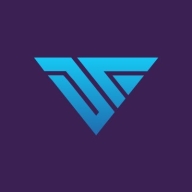


Zscaler Zero Trust Exchange Platform and ThreatStryker are competing in the cybersecurity market, providing solutions for securing enterprise networks. While Zscaler offers robust cloud security, ThreatStryker seems to have the upper hand in feature customization and adaptability.
Features: Zscaler Zero Trust Exchange Platform provides comprehensive cloud security capabilities and a wide threat intelligence network, ensuring secure access without traditional network-based security. ThreatStryker offers exceptional analytical tools and real-time threat detection, notably adapting features to specific enterprise needs.
Ease of Deployment and Customer Service: Zscaler allows seamless deployment in the cloud environment for faster setup and offers extensive online technical support resources. ThreatStryker requires more initial configuration time but has dedicated support options, offering personalized assistance.
Pricing and ROI: Zscaler involves a premium setup cost, delivering strong ROI due to consistent security performance and reduced infrastructure reliance. ThreatStryker provides competitive pricing with attractive ROI from its lower initial costs and threat management efficiency.
| Product | Market Share (%) |
|---|---|
| ThreatStryker | 0.1% |
| Wiz | 20.2% |
| Prisma Cloud by Palo Alto Networks | 12.8% |
| Other | 66.9% |
| Product | Market Share (%) |
|---|---|
| Zscaler Zero Trust Exchange Platform | 15.7% |
| Prisma Access by Palo Alto Networks | 11.7% |
| Cato SASE Cloud Platform | 11.5% |
| Other | 61.1% |

| Company Size | Count |
|---|---|
| Small Business | 47 |
| Midsize Enterprise | 20 |
| Large Enterprise | 53 |
| Company Size | Count |
|---|---|
| Small Business | 16 |
| Midsize Enterprise | 12 |
| Large Enterprise | 41 |
SentinelOne Singularity Cloud Security offers a streamlined approach to cloud security with intuitive operation and strong integration capabilities for heightened threat detection and remediation efficiency.
Singularity Cloud Security stands out for its real-time detection and response, effectively minimizing detection and remediation timelines. Its automated remediation integrates smoothly with third-party tools enhancing operational efficiency. The comprehensive console ensures visibility and support for forensic investigations. Seamless platform integration and robust support for innovation are notable advantages. Areas for development include improved search functionality, affordability, better firewall capabilities for remote users, stable agents, comprehensive reporting, and efficient third-party integrations. Clarity in the interface, responsive support, and real-time alerting need enhancement, with a call for more automation and customization. Better scalability and cost-effective integration without compromising capabilities are desired.
What are SentinelOne Singularity Cloud Security's standout features?SentinelOne Singularity Cloud Security is deployed in industries needing robust cloud security posture management, endpoint protection, and threat hunting. Utilized frequently across AWS and Azure, it assists in monitoring, threat detection, and maintaining compliance in diverse environments while providing real-time alerts and recommendations for proactive threat management.
A Cloud-Native Application Protection Platform (CNAPP) that provides next generation runtime attack analysis, threat assessment, and targeted runtime protection for your cloud infrastructure and applications. Available on premises or in the cloud.
Experience the power of Deepfence ThreatStryker as it uncovers every active container, process, and host, delivering a dynamic, color-coded, interactive topology. With precision, ThreatStryker audits cloud workloads, detecting vulnerable elements, and scrutinizing configurations to reveal misconfigurations in file systems, processes, and networks. Elevate your compliance by leveraging ThreatStryker's assessment capabilities using industry and community-standard benchmarks.
Discover the prowess of ThreatStryker as it conducts in-depth analysis of network traffic, system, and application behavior, while accumulating suspicious events over time. By classifying and correlating events against known vulnerabilities and dubious behavioral patterns, ThreatStryker efficiently detects active threats with minimal false positives, ensuring optimal security for your organization.
Experience the power of ThreatStryker as it identifies suspicious behavioral patterns and swiftly determines the intent behind them. With precise and targeted remedial actions, ThreatStryker handles tainted workloads by deleting, freezing, or restarting them, while blocking attack traffic sources temporarily or permanently. Seamlessly integrated with SIEM and monitoring systems, it raises alerts and effectively halts attackers in their tracks, neutralizing threats and preventing lateral spread.
Zscaler Zero Trust Exchange enhances security with seamless cloud-based connectivity and VPN-less operation, offering integration with multiple identity providers and advanced security features, suitable for remote work environments.
Zscaler Zero Trust Exchange provides secure, adaptive connectivity without traditional VPNs, allowing organizations to replace legacy systems and bolster remote work security. The platform offers cloud-based protection, single sign-on, dynamic URL categorization, and scalable solutions. While advanced security features like DLP and threat protection enhance data protection, users may face issues with speed, connectivity, and some customization options. Integration challenges, latency due to multi-tenant hosting, reporting delays, and licensing costs require consideration. It supports secure internet access and private application security, ensuring traffic control and data compliance.
What are the key features of Zscaler Zero Trust Exchange?Zscaler Zero Trust Exchange is deployed across industries to secure remote access and enforce zero trust principles. Organizations in finance, healthcare, and technology sectors utilize it for secure internet access and visibility into cloud applications, enhancing performance and compliance in dynamic environments.
We monitor all Cloud-Native Application Protection Platforms (CNAPP) reviews to prevent fraudulent reviews and keep review quality high. We do not post reviews by company employees or direct competitors. We validate each review for authenticity via cross-reference with LinkedIn, and personal follow-up with the reviewer when necessary.